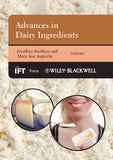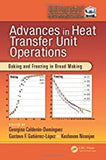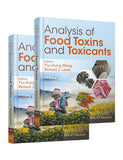Handbook of Food Analysis, Third Edition - Two Volume Set By Leo M.L. Nollet, Fidel Toldra
June 10, 2015 by CRC Press
Reference - 1568 Pages - 355 B/W Illustrations
Features
- Provides immediately applicable information on all major topics relevant to food analysis
- Discusses analysis techniques of all food components
- Explores developments on sample preparation, clean-up, separation, and detection of food parameters
- Presents information in tables that make it easy to find and use
- Includes more than 400 tables, graphs, and charts that distill a wealth of knowledge into a single accessible reference
Summary
Updated to reflect changes in the industry during the last ten years, The Handbook of Food Analysis, Third Edition covers the new analysis systems, optimization of existing techniques, and automation and miniaturization methods. Under the editorial guidance of food science pioneer Leo M.L. Nollet and new editor Fidel Toldra, the chapters take an in-depth look at how to determine the chemical composition of foodstuffs at the level required to safeguard consumer health, well-being, and safety.
See What’s New in the Third Edition:
- Discussions of analysis techniques of rheological, thermal, and flavor properties of food
- Examination of methods and techniques in food analysis
- Coverage amines, flavorings, and food traceability
Unparalleled in breadth and depth, the set delineates the physical and chemical properties of nutrients and other food components. It presents an exhaustive compilation of analytical methods and provides step-by-step descriptions of preparation, detection, separation, derivatization, and clean-up techniques. It also assesses the relative advantage, accuracy, and reliability of each procedure.
Volume 1 covers Physical and Sensory Properties; Additives, Adulteration, and Traceability; and Nutritional Analysis while Volume 2 covers Residues and Other Food Components; as well as Methods, Techniques, and Instruments. Together the two volumes examine both parts of food analysis: analytical and quantitative testing of product composition and guaranteeing product quality and safety as productivity increases. These volumes give you the analytical foundation required to develop food products free from contaminants and toxins and the tools to control their safety.
Table of Contents
Volume 1: Physical and Sensory Properties. Additives, Adulteration, and Traceability. Nutritional Analysis.
Volume 2: Residues and Other Food Components. Methods, Techniques, and Instruments.


















